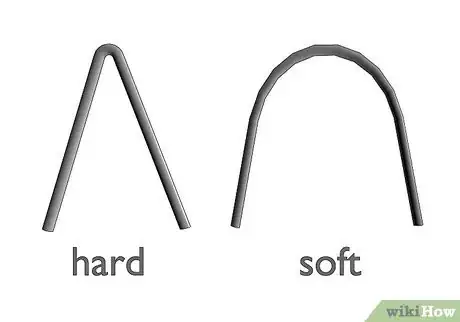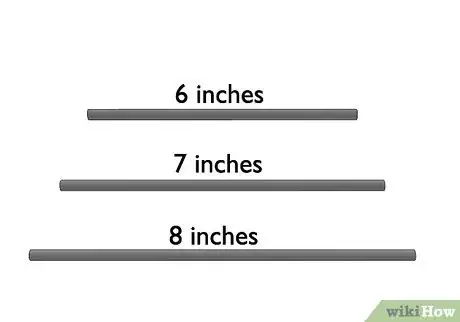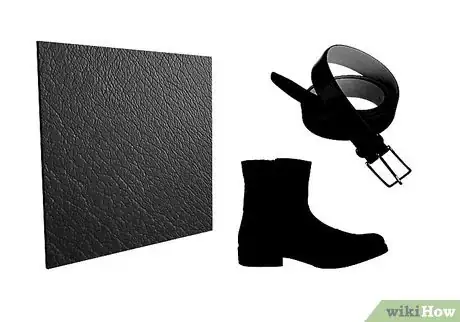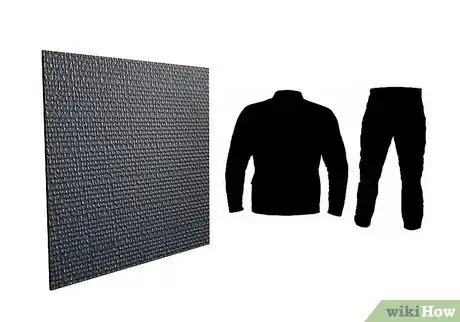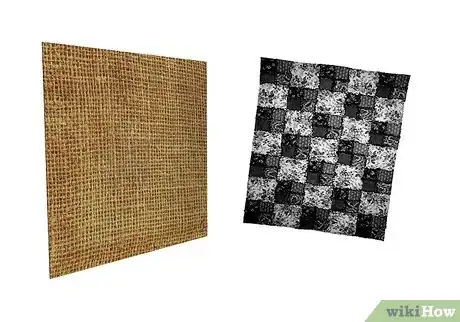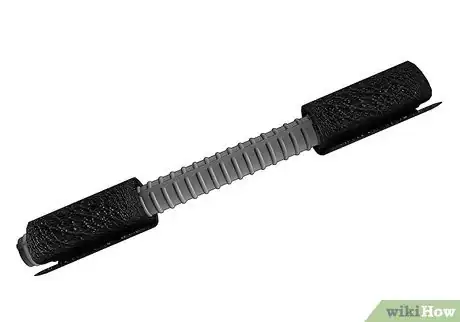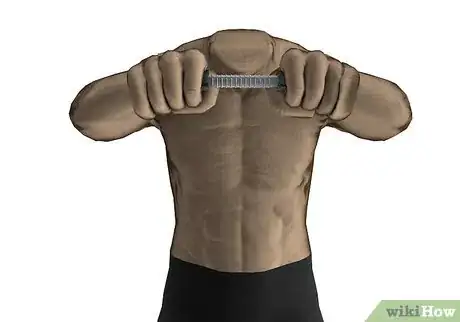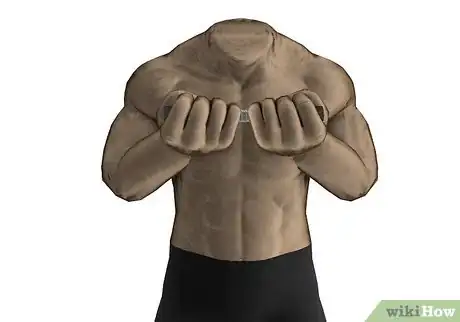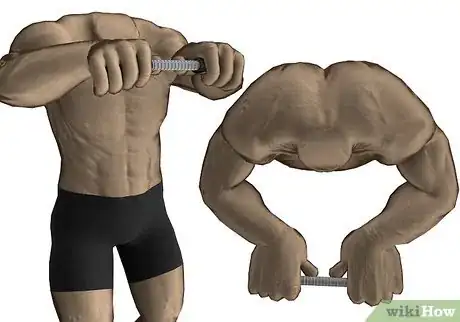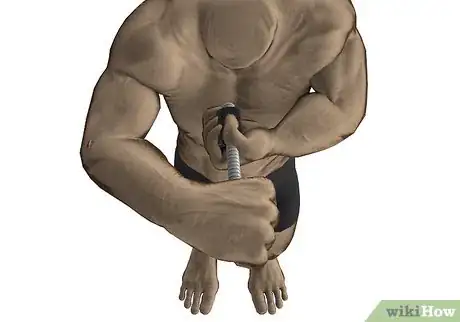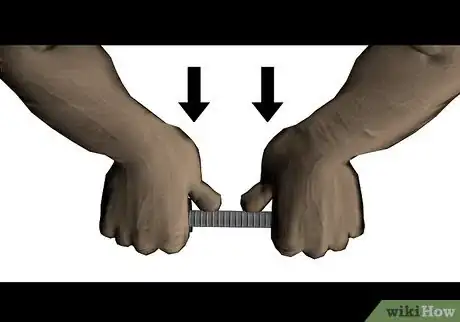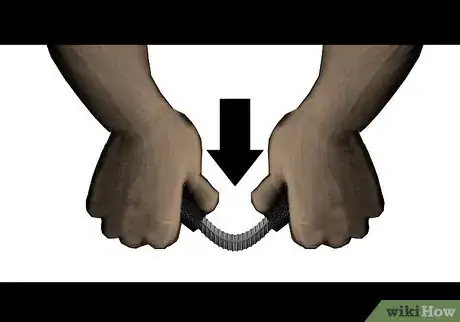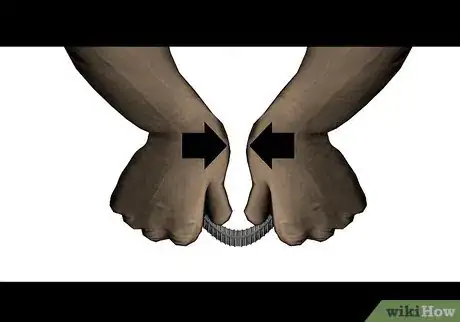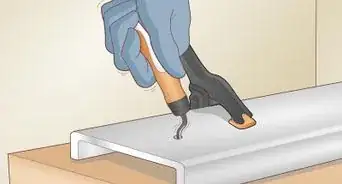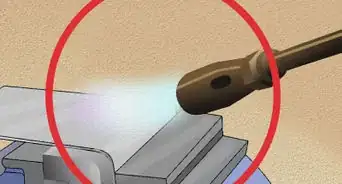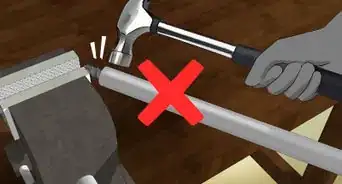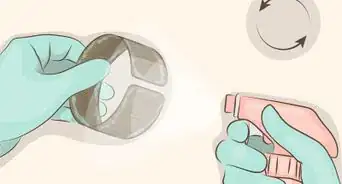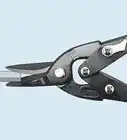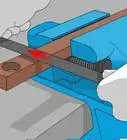wikiHow is a “wiki,” similar to Wikipedia, which means that many of our articles are co-written by multiple authors. To create this article, 9 people, some anonymous, worked to edit and improve it over time.
There are 7 references cited in this article, which can be found at the bottom of the page.
This article has been viewed 162,612 times.
Learn more...
Superman was described on radio and television as able to "bend steel in his bare hands." Although the Man of Steel could bend girders like taffy, it isn't necessary to have been born on Krypton to bend large nails and small metal bars using only the strength in your arms. It takes strength training, careful planning, a few pieces of equipment, and an understanding of proper technique. Here's how to bend steel with your hands.
Steps
Choosing the Steel
-
1Choose the right steel alloy. Most steel bars are either hot-rolled or cold-rolled; a cold rolled bar is shinier than a hot rolled bar, but is also harder to bend. Stainless steel is even harder to bend. The stronger the steel, the more the bend will approximate a "V", while the weaker the steel, the more the bend will look like a "U."[1]
-
2Choose a comfortable length of steel bar. Most strongmen who bend steel bars prefer to work with lengths of five to seven inches (12.5 to 17.5 cm). (A common strongman feat was bending a 60-penny nail, which is 6 inches [15 cm] long.) The shorter the bar, the harder it is to bend, as shorter lengths give less bending leverage than longer lengths; however, some prefer a six inch (15 cm) bar to a seven inch (17.5 cm) bar because of the way the stock was formed.
- You can buy steel bars in the optimal length for hand-bending from some online retailers or buy longer bars either online or from your local hardware store and cut off a piece of the desired length. To cut the steel bar, use a pair of bolt cutters, preferably about 24 inches (60 cm) long. Wear safety goggles when cutting, as short pieces can travel at high speed when cut from the larger bar stock. Grind or file off the cut end to smooth it.[2]
Advertisement -
3Choose a comfortable thickness. Thicker bars are harder to bend than thinner bars. Doubling the diameter quadruples the amount of force required to bend the bar; it takes four times the torque to bend a 3/8-inch (9.6 mm) bar as it does a 3/16-inch (4.8 mm) bar.
-
4Choose a well rounded bar. The more sides the bar has, the easier it is to bend it. A hexagonal bar is easier to bend than a square bar, while a round bar is the easiest of all to bend.
Wrapping the Steel
-
1Choose a suitable wrapping material. Before attempting to bend the steel bar, you need to wrap it in material to make it easier to grip and bend, as well as to protect your hands as you bend it. Suitable wrapping materials include the following:[3]
- Leather. Leather is the toughest material you can use to wrap the steel with and is the best material for adding leverage to your grip.
- Cordura. Cordura, a synthetic canvas-like fabric, is used in professionally created bending wraps. It's as puncture resistant and durable as leather, but not as good in adding leverage to your grip. Cordura is initially stiff, but becomes more supple over time as it absorbs the oils from your skin.
- Heavy cloth. A heavy cloth, such as a shop cloth or rag, is the cheapest suitable wrapping material, and has been traditionally used for nail bending feats. However, it is nowhere near as durable or puncture-proof as either leather or Cordura.
-
2Fold or cut the wrapping material into strips. If you're using leather, cut strips twelve inches (30 cm) long by four inches (10 cm) wide. If you're using either Cordura or heavy cloth, fold the material into strips of these dimensions.
-
3Coat the strips with chalk. The chalk will keep the wrap from slipping once it's wrapped around the steel.
-
4Wrap each end of the bar with a strip, leaving a gap between the strips. Wrap the strips around the bar as tightly as possible to keep them from slipping; you may wish to use a rubber band to keep the wrapping tight. Leaving a gap between the strips prevents one strip from bumping into the other as you bend the steel and preventing you from completing the bend.
Bending the Steel
-
1Grasp the bar firmly. If you're using either the double overhand or palms down grip, your thumbs should be pushing into the nail or bar through the wrapping, while your index, middle, and ring fingers are wrapped tightly around the bar. If you're using the double underhand grip, your pinkies should grip the bar the tightest, while your index, middle, and ring fingers grip the bar slightly less tightly.
-
2Apply force to the bar. Push your fulcrum fingers into the steel as you start bending the ends of the bar toward each other. Your wrists will channel the driving force from your arm muscles, concentrated in your index fingers with the double overhand or palms down grip, the index finger of your far hand with the reverse grip, or your upper palms with the double underhand grip. Your goal is to bend the bar to at least a 45-degree angle.[6]
-
3Sweep the bar to a 90-degree bend. Keep up the bending pressure from your fulcrum fingers and your driving muscles as you bend the steel further, until your fulcrum fingers start to touch.[7]
- If you're bending from the double overhand position, you can go from making the initial bend to continuing the bend in a single motion without changing your hand grip. If you're bending from the palms down or reverse position, you may have to change to the double overhand position to continue bending the steel.
- Ideally, you want to make this part of the bend in a single, smooth motion. If you're not strong enough to do that, you can make multiple attempts in rapid succession, using as much force as you can muster. Don't rest too long between attempts, or the steel will cool, making it harder to bend.
-
4Crush the ends of the bar together. Press the ends of the bar together until you can lace your fingers together; the ends should be about 2 inches (5 cm) apart. Then, use your clasped hands and upper arms like a nutcracker to finish bending the steel.
- You may have to remove some of the wrapping around the steel if it gets in the way. You may also have to grasp the bent steel in one hand and clasp that hand with your other hand, squeezing both the steel and your hand.
- As with the sweep, crush the bar's ends together should follow quickly after making the 90-degree bend so that the steel doesn't have time to cool.
Warnings
- Do not attempt to bend a steel bar without wrapping it first with protective material. Although Superman could bend steel in his bare hands, Superman was invulnerable as well as super-strong. The ends of the bar can puncture the skin of your hands, while the bar itself will damage nerves in the hands as you press on it barehanded. (This is why weightlifters in competition wrap their hands before grasping the bar of a barbell.)⧼thumbs_response⧽
Things You'll Need
- Metal bar, 5 to 7 inches (12.5 to 17.5 cm) long
- Wrapping material (leather, Cordura, or heavy cloth)
- Powdered chalk
- Bolt cutters, 24 inches (60 cm) long
- Metal file
References
- ↑ https://www.youtube.com/watch?v=TxpW8anyu3U
- ↑ https://www.youtube.com/watch?v=x5l6cxz0G8k
- ↑ https://breakingmuscle.com/fitness/feats-of-strength-how-to-bend-a-nail-in-half
- ↑ https://www.youtube.com/watch?v=hL8xoK__-Z4
- ↑ http://www.davidhorne-gripmaster.com/dubending.html
- ↑ http://www.legendarystrength.com/articles/bending-nails-for-fun-and-strength/
- ↑ https://www.youtube.com/watch?v=9wncSMBnJow
